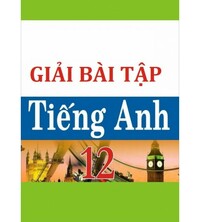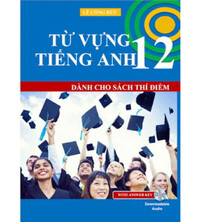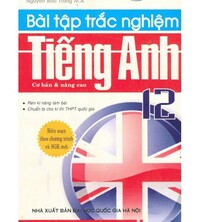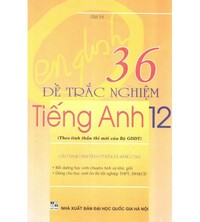Tiếng Anh 12 Unit 3 Writing
A problem-solving report on green solutions 1. Work in pairs. Complete the notes using the words in the box. 2. Read a problem-solving report and match the sections (A-D) with the correct headings (1-4). 3. Choose one of the problems in 1 and write a problem-solving report (180 words). Use the model in 2 and the outline with useful expressions below to help you.
Bài 1
A problem-solving report on green solutions
(Báo cáo giải quyết vấn đề về những giải pháp xanh)
1. Work in pairs. Complete the notes using the words in the box.
(Làm việc theo cặp. Hoàn thành ghi chú bằng cách sử dụng các từ trong hộp.)
|
compost piles automatic public transport recycle |
|
Problems & consequences |
Green solutions |
|
Many single-use plastic products are thrown in rubbish bins. They take many years to decompose in landfills. |
Use them in arts and crafts projects (e.g. making plant pots) or (1) ______ them |
|
People leave the lights on and the water running in restrooms. This is a waste of electricity and water. |
Install (2) ______ lights and sensor taps that turn off when no one is around |
|
Dry leaves are sometimes burnt in the schoolyard. This can cause air pollution and fires. |
Create (3) ______ |
|
Many parents drive their children to school and pick them up from school every day. This causes traffic jams, noise, and air pollution at the school gate. |
Encourage more students to cycle or walk to school, or use (4) ______ to go to school (e.g. free bus tickets, cycle-to-school programme) |
Phương pháp giải:
- compost piles (np): đống phân hữu cơ
- automatic (adj): tự động
- public transport (np): phương tiện công cộng
- recycle (v): tái chế
Lời giải chi tiết:
|
1. recycle |
2. automatic |
3. compost piles |
4. public transport |
|
Problems & consequences (Vấn đề & hậu quả) |
Green solutions (Giải pháp xanh) |
|
Many single-use plastic products are thrown in rubbish bins. They take many years to decompose in landfills. (Nhiều sản phẩm nhựa dùng một lần bị vứt vào thùng rác. Chúng phải mất nhiều năm để phân hủy ở các bãi chôn lấp.) |
Use them in arts and crafts projects (e.g. making plant pots) or (1) recycle them. (Sử dụng chúng trong các dự án thủ công và nghệ thuật (ví dụ: làm chậu cây) hoặc tái chế chúng.) |
|
People leave the lights on and the water running in restrooms. This is a waste of electricity and water. (Mọi người để đèn sáng và nước chảy trong nhà vệ sinh. Đây là sự lãng phí điện và nước.) |
Install (2) automatic lights and sensor taps that turn off when no one is around. (Lắp đèn tự động và vòi cảm biến tắt khi không có người xung quanh.) |
|
Dry leaves are sometimes burnt in the schoolyard. This can cause air pollution and fires. (Lá khô thỉnh thoảng bị đốt ở sân trường. Điều này có thể gây ô nhiễm không khí và hỏa hoạn.) |
Create (3) compost piles. (Tạo đống phân trộn.) |
|
Many parents drive their children to school and pick them up from school every day. This causes traffic jams, noise, and air pollution at the school gate. (Nhiều phụ huynh chở con đến trường và đón con hàng ngày. Điều này gây ra ùn tắc giao thông, tiếng ồn và ô nhiễm không khí ở cổng trường.) |
Encourage more students to cycle or walk to school, or use (4) public transport to go to school (e.g. free bus tickets, cycle-to-school programme) (Khuyến khích nhiều học sinh đạp xe hoặc đi bộ đến trường hoặc sử dụng phương tiện giao thông công cộng để đến trường (ví dụ: vé xe buýt miễn phí, chương trình đạp xe đến trường) |
Bài 2
2. Read a problem-solving report and match the sections (A-D) with the correct headings (1-4).
(Đọc một báo cáo giải quyết vấn đề và nối các phần (A-D) với các tiêu đề chính xác (1-4).)
1. Conclusion (Kết luận)
2. Problems (Vấn đề)
3. Introduction (Mở bài)
4. Solutions (Giải pháp)
A. ____
This report describes the problem of single-use plastics in our school and suggests three main solutions to the problem.
B. ____
Many students at our school buy bottled water or takeaway food. As a result, hundreds of water bottles and single-use plastic containers are thrown away every day. Besides, students often put containers with leftovers in them into the recycling bin, which can lead to contaminating the recyclable waste. This means our school produces a lot of plastic waste that goes to landfills and has a harmful effect on the environment.
C. ____
To solve this problem, we propose the following solutions. First, we suggest that the school should provide more recycling bins. Second, the Youth Union should hold regular sessions to teach students how to recycle properly. Third, we recommend that we make use of plastic waste in arts and crafts projects, for example, for making plant pots or bird feeders.
D. ____
Reusing and recycling single-use plastics will lead to a greener school environment and help promote a green lifestyle among young people. Therefore, we recommend you put the suggested solutions into practice as soon as possible.
Lời giải chi tiết:
|
A. 3 |
B. 2 |
C. 4 |
D. 1 |
Tạm dịch:
A. Giới thiệu
Báo cáo này mô tả vấn đề nhựa sử dụng một lần ở trường học của chúng ta và đề xuất ba giải pháp chính cho vấn đề này.
B. Vấn đề
Nhiều học sinh ở trường chúng ta mua nước đóng chai hoặc đồ ăn mang đi. Kết quả là hàng trăm chai nước và hộp nhựa dùng một lần bị vứt đi mỗi ngày. Ngoài ra, học sinh thường bỏ các thùng đựng thức ăn thừa vào thùng tái chế, điều này có thể gây ô nhiễm rác tái chế. Điều này có nghĩa là trường học của chúng ta thải ra rất nhiều rác thải nhựa được đưa đi chôn lấp và gây ảnh hưởng xấu đến môi trường.
C. Giải pháp
Để giải quyết vấn đề này, chúng tôi đề xuất các giải pháp sau. Đầu tiên, chúng tôi đề nghị nhà trường nên cung cấp thêm thùng tái chế. Thứ hai, Đoàn thanh niên nên tổ chức thường xuyên các buổi dạy học sinh cách tái chế rác thải đúng cách. Thứ ba, chúng tôi đề xuất rằng chúng ta nên tận dụng rác thải nhựa trong các dự án thủ công mỹ nghệ, chẳng hạn như làm chậu cây hoặc máng đựng thức ăn cho chim.
D. Kết luận
Tái sử dụng và tái chế nhựa dùng một lần sẽ mang lại môi trường học đường xanh hơn và giúp thúc đẩy lối sống xanh trong giới trẻ. Vì vậy, chúng tôi khuyên bạn nên áp dụng các giải pháp được đề xuất vào thực tế càng sớm càng tốt.
Bài 3
3. Choose one of the problems in 1 and write a problem-solving report (180 words). Use the model in 2 and the outline with useful expressions below to help you.
(Chọn một trong các vấn đề ở bài 1 và viết báo cáo giải quyết vấn đề (180 từ). Hãy sử dụng mô hình ở bài 2 và dàn bài với những cách diễn đạt hữu ích dưới đây để giúp bạn.)
Introduction (Mở bài)
This report describes the problem of ... and suggests... solutions to the problem.
(Báo cáo này miêu tả vấn đề của… và đề xuất… những giải pháp cho vấn đề này.)
Problems (Vấn đề)
… As a result/Therefore, ... (Vì vậy)
… can damage/have a harmful effect on ...
(…có thể phá hủy/ có ảnh hưởng xấu đến…)
Solutions (Giải pháp)
To solve ..., we suggest/propose the following solutions.
(Để giải quyết…, chúng tôi đề xuất những giải pháp sau.)
First, we suggest/recommend that the students/the school should ...
(Trước tiên, chúng tôi đề nghị rằng học sinh/ trường học nên…)
Second, it is important for students to...
(Thứ hai, điều quan trọng là học sinh nên…)
Conclusion (Kết bài)
... will lead to .../will help promote a green lifestyle/green habits ...
(… sẽ dẫn đến…/ sẽ giúp tang cường lối sống xanh/ thói quen xanh…)
Therefore, I recommend ...
(Vì vậy, tôi đề xuất…)
Lời giải chi tiết:
Introduction:
This report describes the problem of traffic congestion, noise and air pollution at the school gate and suggests two main solutions to the problem.
Problems:
Many parents at our school drive their children to school and pick them up at the school gate. Therefore, it has caused severe traffic jams, increased noise levels and air pollution. This not only disrupts the flow of traffic but also has a harmful effect on the environment.
Solutions:
To solve this issue, we propose the following solutions. First, we recommend that the school should establish designated drop-off and pick-up zones away from the main entrance in collaboration with local authorities to alleviate congestion. Second, it is important for students to cycle, walk, or use public transport to go to school frequently to reduce the amount of pollution.
Conclusion:
Implementing these solutions will undoubtedly lead to reduced traffic congestion, decreased noise pollution, and improved air quality around the school gate. Therefore, we recommend you put the suggested solutions into practice as soon as possible.
Tạm dịch:
Giới thiệu:
Báo cáo này mô tả vấn đề ùn tắc giao thông, tiếng ồn và ô nhiễm không khí tại cổng trường và đề xuất hai giải pháp chính cho vấn đề này.
Vấn đề:
Nhiều phụ huynh trường chúng ta chở con đến trường và đón con tại cổng trường. Vì vậy, nó đã gây ra ùn tắc giao thông nghiêm trọng, làm tăng độ ồn và ô nhiễm không khí. Điều này không chỉ làm gián đoạn luồng giao thông mà còn gây ảnh hưởng xấu đến môi trường.
Giải pháp:
Để giải quyết vấn đề này, chúng tôi đề xuất các giải pháp sau. Trước tiên, chúng tôi khuyến nghị nhà trường nên thiết lập các khu vực đón và trả khách được chỉ định cách xa cổng chính, phối hợp với chính quyền địa phương để giảm bớt tắc nghẽn. Thứ hai, điều quan trọng là học sinh phải đạp xe, đi bộ hoặc sử dụng phương tiện giao thông công cộng để đến trường thường xuyên để giảm lượng ô nhiễm.
Kết luận:
Việc thực hiện các giải pháp này chắc chắn sẽ giúp giảm ùn tắc giao thông, giảm ô nhiễm tiếng ồn và cải thiện chất lượng không khí xung quanh cổng trường. Vì vậy, chúng tôi khuyên bạn nên áp dụng các giải pháp được đề xuất vào thực tế càng sớm càng tốt.
Search google: "từ khóa + timdapan.com" Ví dụ: "Tiếng Anh 12 Unit 3 Writing timdapan.com"







